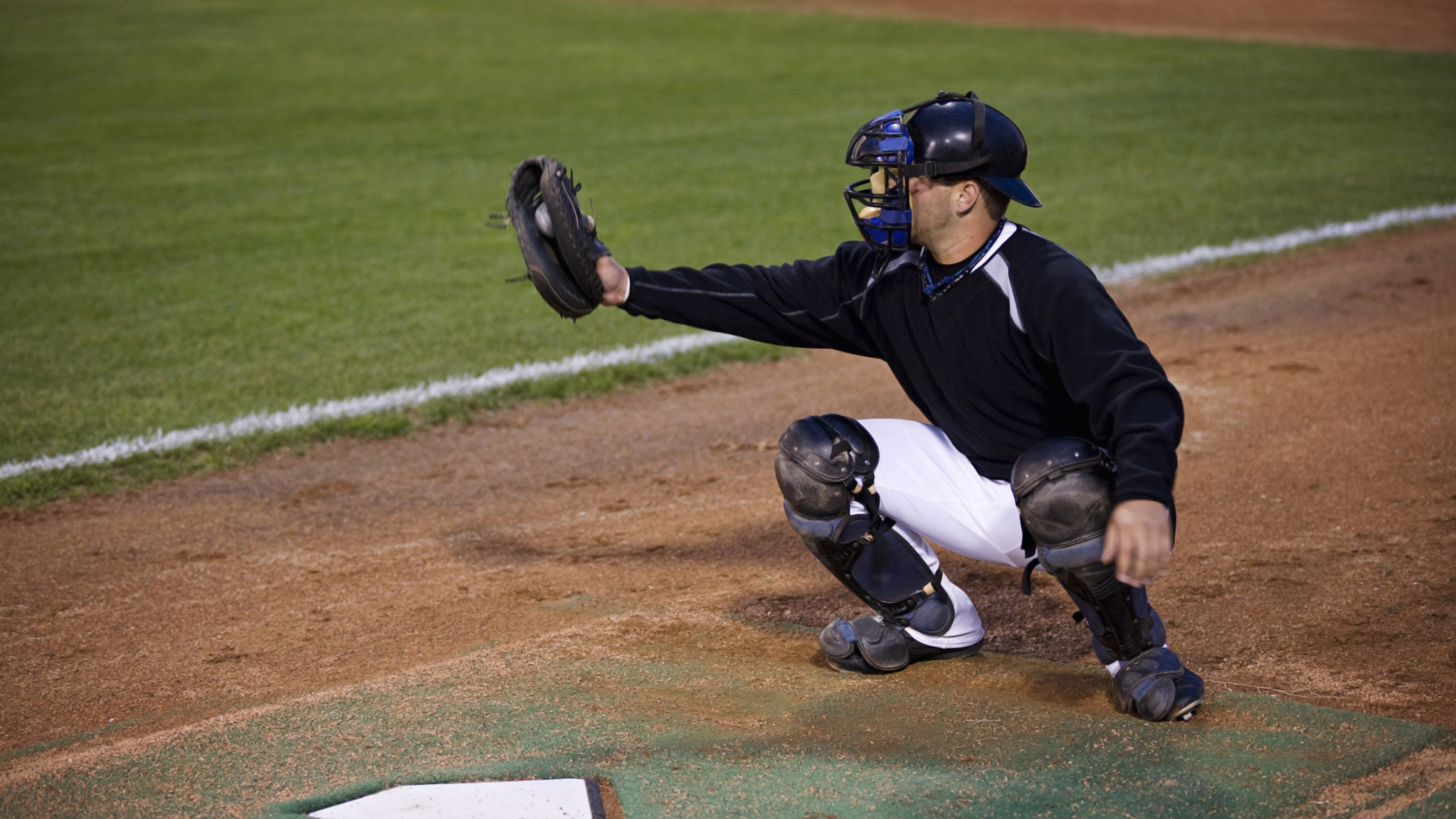Did you know that—in baseball or softball, the catcher is the player who crouches behind home plate and catches the pitches that aren’t hit by the batter. The catcher plays an important role in the game of baseball, being the person who uses hand signals to request specific pitches and heads up the team’s defense. The catcher in softball holds an important role. You are the first line of defense. Without you, the game would lose its rhythm. You help set the pace. Your job involves more than catching pitches.
You must also manage the pitcher and read the game as it unfolds. Why is this important? It allows the team to stay organized and focused. In fact—catching requires physical agility and quick thinking. You must move fast to block pitches in the dirt. Can you react quickly enough to stop a wild pitch? The answer depends on your reflexes. Not only do you need a strong arm to throw runners out, but you also need excellent communication skills. You communicate silently with the pitcher, helping them stay on track.
You lead the defense. Most importantly, you help your team stay one step ahead of the competition. Let’s explore it.
The Role and Responsibilities of a Softball Catcher
As a softball catcher, you hold a crucial role on the field. You are the key player in the defense. Every pitch comes through you. Your actions impact the game’s outcome. Catching pitches is your main duty. But you must do much more. Can you predict what happens next? Your job includes blocking wild pitches, throwing to second base, and stopping base runners from stealing. Every decision matters.
Communication makes your job easier. You must stay in constant contact with the pitcher. You decide the best strategy for each batter. Should you call it a fastball or a curve? Each choice affects the game. You also need to organize the team. You direct your teammates where to position themselves. Do they need to shift to cover a gap? Your guidance keeps the defense strong and ready. Quick reflexes are a must. You must move fast. Whether catching a pop-up or stopping a low pitch, you need agility. Can you react quickly enough to stop a runner from scoring?
Strength and accuracy matter too. A strong arm helps you throw out base runners. Your throw must be accurate. Can you make that perfect throw to prevent a stolen base? Are you ready to lead under pressure? Remaining calm in tense moments is essential. You control the pace of the game. The pitcher relies on you.
Essential Skills Required for a Softball Catcher
Being a successful softball catcher requires specific skills and Tips for softball catchers. You must be quick, alert, and focused. Can you react fast enough to catch a pitch? Let’s explore the key skills you need.
- First, agility is crucial. You must move swiftly behind the plate. Whether blocking a wild pitch or catching a pop-up, agility helps you stay on your toes. Can you jump, squat, and pivot without missing a beat?
- Next, strong hands and good grip strength matter. You must catch high-speed pitches. Whether it’s a fastball or a curve, your hands must be firm and steady. Can you handle the pressure of every pitch?
- Your arm strength also plays a big role. A catcher needs a powerful throw to stop stolen bases. Can you throw a runner out at second with accuracy? A strong arm helps prevent steals and keeps the opposing team in check.
- A catcher’s communication skills are vital. You need to talk to your pitcher and teammates. Calling signals for pitches, directing players, and staying in sync with the team are all part of the job. Can you lead your team through every play?
- Finally, you must have mental toughness. Softball can get intense. You’ll face pressure situations, especially with runners on base. Can you stay calm under pressure and make the right call? Being mentally strong keeps you focused on the game.
Do you have these essential skills? Each one is vital for success.
Physical and Mental Demands of the Catching Position
Catching softball requires stamina. Your legs and core must be strong. You will squat for long periods behind the plate. Can your body handle that kind of strain? The catcher’s work is physically tough. The position demands quick reflexes and agility. You need to react fast to both pitched balls and base runners. Are you ready to move fast on every play?
Physical Demands
Catching requires physical strength. Your legs and core must be strong. You will squat for long periods behind the plate. Can you handle that kind of strain? You must be quick and agile. Reflexes need to be sharp. You have to react fast to pitches and base runners. Are you ready for the speed?
The catcher’s work is tough. You will take hits from foul balls, fast pitches, and slides. Staying tough after a hit is important. Can you recover quickly?
Mental Demands
Catchers must be mentally sharp. Focus is crucial. You have to read the batter’s stance and anticipate every move. How do you stay alert? Pressure is constant. Every pitch and throw counts. One mistake can change the game.
Can you stay calm under stress?
Handling Physical and Mental Stress
Catching means managing both physical and mental stress. Your body will tire, but your mind must stay clear. Can you keep focused when fatigue hits?
What Are The Catcher’s Gear and Equipment?
The catcher’s gear keeps you safe and boosts your performance. A well-fitted helmet protects your head from fast pitches and foul balls. The chest protector absorbs impacts, helping you stay strong after each hit. Leg guards shield your knees and shins when blocking balls or tagging runners. A good mitt allows you to catch fast pitches cleanly. How important is comfort? Gear that fits well lets you move freely and perform better.
Poorly fitting equipment can restrict your movements and hurt your game. Make sure to maintain your gear. Regular cleaning and checks extend its life and keep you safe.
Communication and Coordination With The Team
Effective communication and coordination define a softball catcher’s success. As a catcher, you must serve as the eyes and voice of the team. You guide players, direct defensive plays, and keep everything running smoothly. Your role requires clear signals and quick decision-making. How do you make sure everyone stays in sync? Your first responsibility is working closely with the pitcher. You call the shots for the next pitch, adjusting as needed based on the batter and the situation. A solid relationship between you and the pitcher is crucial. Trust and understanding make your communication seamless. Can you see how that trust builds confidence on the mound?
Next, you coordinate the defense. You make sure everyone knows their position and is ready for action. You call out the play, direct the infielders, and ensure they know what to do. Do you feel the pressure of organizing everyone on the field? Don’t forget the outfielders. You direct them, too. You make sure they know when to back up plays or adjust their positioning. Your coordination keeps the whole defense in sync. When the outfielders know exactly where to go, the defense runs like a well-oiled machine. Can you handle communication during the tense moments?
You must stay calm. A steady, confident voice guides your team in high-pressure situations. When everyone hears clear instructions, they stay focused. Your calmness inspires confidence. Finally, you must lift the team’s spirit. Positive communication builds morale. Encouraging words from behind the plate can make a huge difference. Do you see how your words affect the team’s performance? Clear communication and strong coordination ensure success. Stay sharp and always be ready to lead your team from behind the plate.
Challenges Faced by Softball Catchers
| Challenge | Description |
| Physical Demand | Catchers endure long hours of squatting, frequent movements, and sudden bursts of activity. They must maintain stamina and strength throughout the game. |
| Protecting the Plate | Keeping runners from stealing bases or scoring requires quick reflexes and positioning. Catchers must block the plate and make split-second decisions. |
| Pitch Calling | Deciding which pitch to call is a key responsibility. |
| Constant Communication | Catchers act as the team’s communication hub. They must relay signals, direct fielders, and keep everyone on the same page. |
| Handling High-Stress Situations | Game-winning situations often fall on the catcher. They must remain calm, especially in pressure-packed moments like a full count or bases loaded. |
| Preventing Injury | Softball catchers face high injury risks due to the physical nature of the role. They often sustain bruises, strains, and knee injuries. |
| Mental Toughness | The position demands mental resilience. Catchers need to stay focused, stay positive, and bounce back quickly from mistakes. |
| Maintaining Proper Gear | Catchers wear heavy protective gear, including a mask, chest protector, and shin guards. They must ensure it’s in top condition to prevent injuries. |
Conclusion
The responsibilities of a softball catcher are demanding. This position requires both physical strength and mental focus. You must stay calm under pressure, as every decision you make plays a crucial role. Your actions guide the game and protect your team. Quick reactions and constant alertness are key throughout the game. Though challenges arise, the role offers many rewards.

